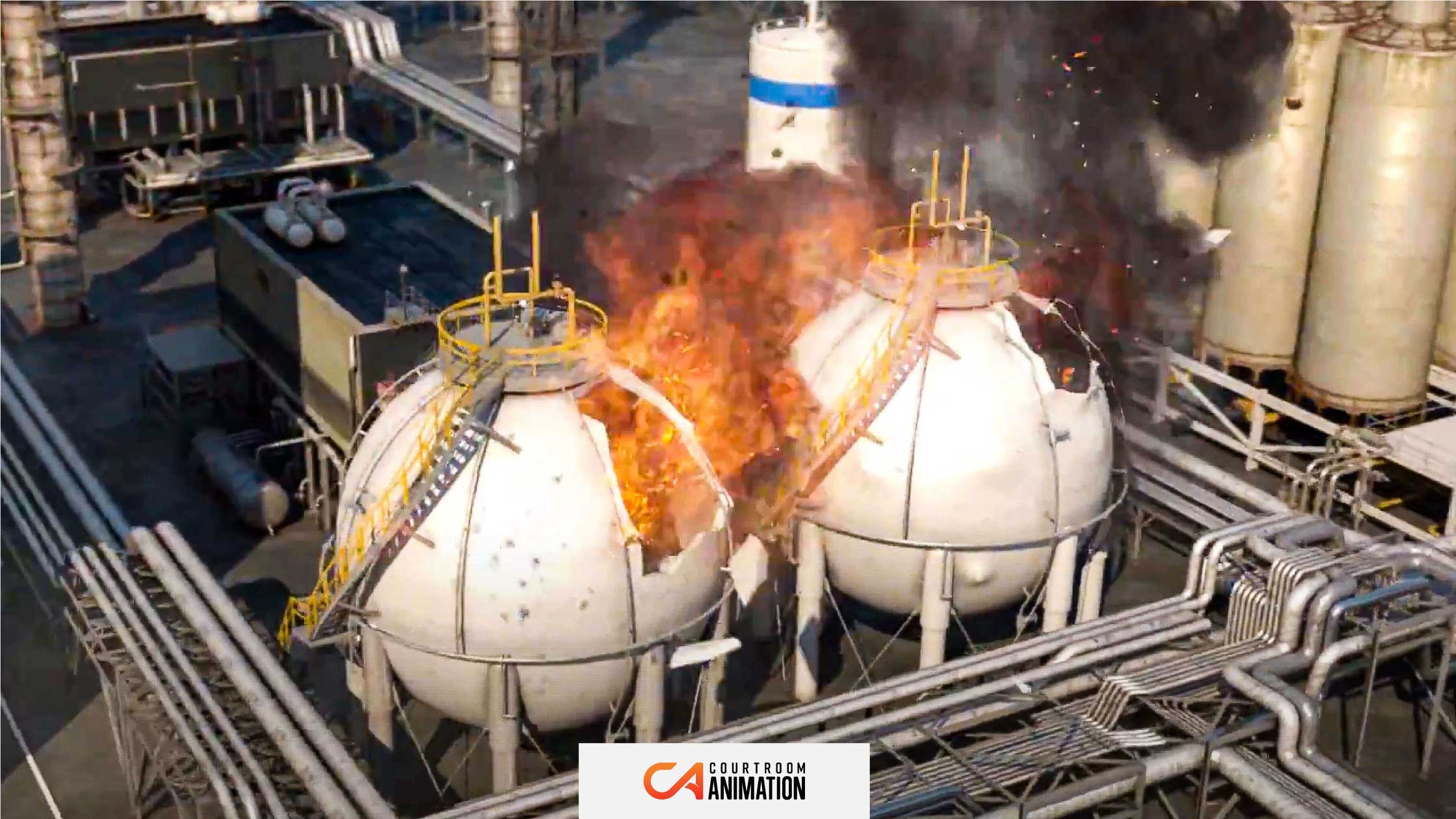
Imagine you are sitting at a five-star restaurant, ready to eat your meal. The waiter approaches your table and announces what each ingredient in your dish is. Then, they place an empty plate in front of you, stating that the food is there, it’s just invisible. Since you can’t physically see the food, your visual senses are neglected and the meal feels incomplete.
This scenario is like an expert witness explaining the technical background of your case, and presenting it to your audience. Without courtroom graphics, or any visual, you risk that your audience will disengage from your argument, no matter how accurate the facts are.
But to make the right impact, you need to decide which courtroom graphics to select to maximize the impact on your viewers. But how can you determine what type of visuals work best for your case?
- Medical legal graphics
- Forensic graphics
- Accident recreation graphics
- Mechanical diagram graphics
- Timeline graphics
To help inform what types of graphics you use, you’ll want to think about your audience: who are they and what level of basic knowledge around your case can you expect? And, what type(s) of graphic can elevate your argument and lead to a more favorable settlement or verdict?
Before we talk about these five types of graphics in detail, let’s define courtroom graphics a little more closely.
What are Courtroom Graphics?
There are many types and formats of court exhibits. Courtroom graphics, specifically, can be defined as follows:
Courtroom graphics is an umbrella term for different types of legal graphics used throughout the legal process for civil cases.
Overall, they help explain any intricate case and provide more information for the audience during any stage of the legal process.
Will they help me secure a more favorable outcome?
In the study “Effects of a Visual Technology on Mock Juror Decision Making,” researchers compared civil attorney arguments delivered with and without trial graphics.
Research found that when either attorney used visuals, it helped the jurors recall their evidence and improve outcomes. For example, when the plaintiff attorney used visuals, the jury determined that the mock defendant had greater liability.
Due to this increased success that comes from using them, visuals are now used regularly in the courtroom compared to the late 1900s. In fact, one of the most common types of courtroom visuals is a medical legal graphic.
1. Medical Legal Graphics
Medical legal graphics are best suited for personal injury and medical malpractice cases. As most jurors do not have the medical background to know the impact of a brain injury, a medical graphic provides a high-level view of the injury.
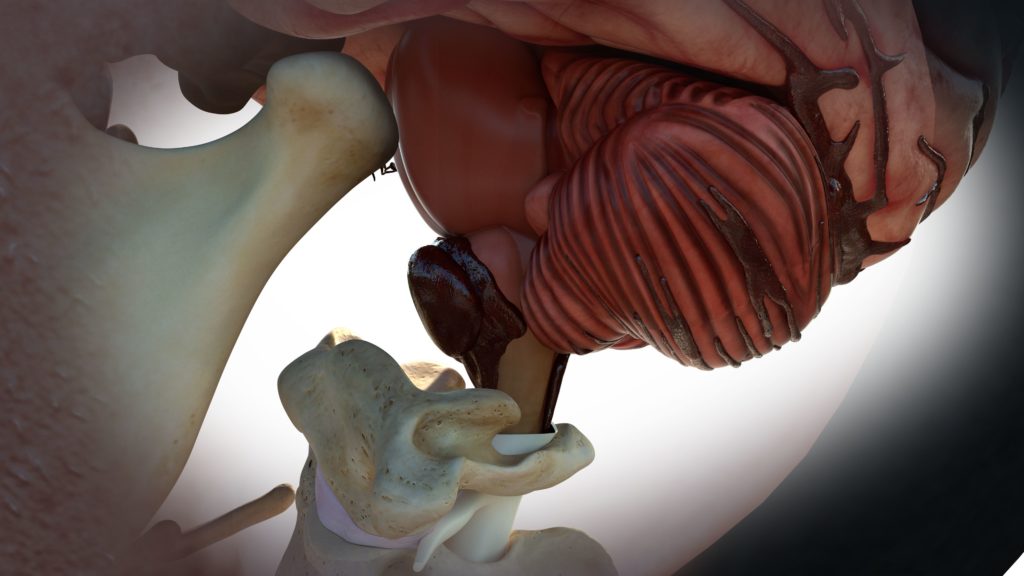
Sample Medical Legal Graphic from Courtroom Animation
These graphics can be used to validate an expert witness’ explanation and provide context around complex medical concepts and procedures. For medical malpractice cases, the visual can demonstrate how a medical professional did not follow the general standard of care, performed an unnecessary or improperly executed surgery, etc. And for personal injury, you can clearly depict the mechanisms of injury involved in the incident.
Download this free legal graphics checklist to prepare your case for any type of legal visual.
Forensic Animation Graphics
Forensic graphics also include medical graphics, but they are not limited to them. They have a multitude of purposes, and help erase conflicting perceptions in court.
Imagine you were representing one person who was assaulted and the footage was caught on camera. A forensic animation could recreate the store’s surveillance footage and depict the incident without bias.
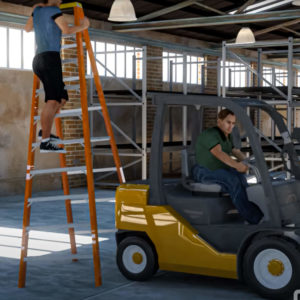
Sample Forensic Graphic from Courtroom Animation
Forensic graphics often accompany forensic animations. While an animation guides the audience through how objects or people interacted during the incident, a graphic can outline changes that the viewer might have missed.
For example, a before and after still highlights any changes not seen in the animation. This includes street sign removals, the aftermath of natural disasters, etc. Forensic graphics also point out specific steps in a process, such as how a car broke down piece by piece.
Accident Recreation Graphics
The National Safety Council estimated that over 42,000 people died in motor vehicle crashes in 2020. With so many crashes and injuries, and subsequent personal injury lawsuits, accident recreation graphics are crucial for civil attorneys.
An accident reconstruction graphic helps your audience better visualize the positionings of the cars involved. If there are multiple cars driving at different speeds, the jury or judge will thank you for an easy-to-understand graphic.
A still breaks down the speed of the collision and how it affected your client. For example, the graphic below was a snapshot of a motor vehicle collision, and represented the full impact of the crash.

Sample Traffic Accident Graphic from Courtroom Animation
Overall, these types of courtroom graphics help your audience understand exactly what happened between vehicles. And of course, other types of accidents — such as aviation accidents, both general and commercial — can warrant accident visuals as well.
“The [legal graphic] was key in obtaining a $2.2 million verdict. When the jury saw it, they nodded their heads up and down, and for the first time they really understood what had happened to my client.”
– Steve Vartazarian, The Vartazarian Law Firm
Mechanical Diagram Graphics
It’s important to keep in mind that every courtroom graphic is created with expert witness data, which provides the visual with a scientific foundation. These graphics are not imagined, they’re based on real, factual data.
This is especially true for mechanical graphics. In a product liability case, an expert witness can explain how the car failure occurred, but your audience is unlikely to be aware of how the product works, let alone the complex mechanisms of failure involved. This might mean the jury might not fully understand your argument, and risks not giving them the information they need to properly assess liability.
As an example, take a car engine failure — something that the average person probably doesn’t know much about. You could state, “There was a malfunction between the ball joint stem and the right steering knuckle,” or you could present this graphic to your audience:
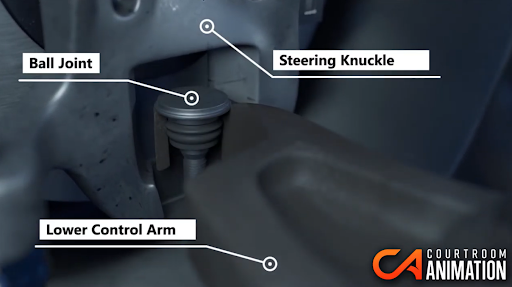
Courtroom Graphic Examples from Police Car Product Failure Animation
Which approach is more compelling and understandable? These mechanical diagrams make all the difference for your client receiving a more favorable outcome.
Timeline Graphics
If your case has been in progress for a prolonged period, such as a series of surgeries over a period of months or years, the jury might not remember every detail in the correct order. Timeline graphics tell the story of how failures or incidents occurred along a certain timeframe. You can even speed up or slow down time in animations to depict incidents in a more understandable way.
Between multiple witnesses’ testimony and medical records, it can be difficult for your audience to remember every detail. For example, medical treatments and patient care journeys are often a long, drawn-out process involving multiple parties and negligent missteps. The source of a product failure might have happened years before the actual failure.
To better establish an accurate timeline and visual narrative for your civil case, litigation graphics are an invaluable tool. Your client’s story visualized on a timeline will simplify the events that occurred during a misdiagnosis or unsound treatment plan.
For example, a timeline could conceptualize these aspects in a medical malpractice case:
- Prescription drug errors over a period of time
- The date of a surgical error and the effects thereafter
- Resulting damages from various injuries
The Legal Benefits to Law Graphics
While there are different types of legal graphics used in any civil case’s legal process, they boil down to five main categories. Medical legal graphics are often perfect for personal injury cases, while forensic graphics appeal to a wider audience.
If your client was in a car crash, then an accident recreation graphic could help the jury understand how the vehicles collided — or how the accident could have been avoided. On the other hand, if your case is more focused on product liability and the car itself broke down, then a mechanical diagram can label the damaged pieces.
With a timeline graphic, the course of events that caused the car to malfunction are easy to read. As humans are visual learners, your audience has a better chance to remember your core argument through law graphics.
Now that you know what courtroom graphics are best for your case type, you might need help choosing a provider. Our animation team has supported over 2,000 cases, and helped win over $1 billion in results.
If you want to learn more about legal graphics and how they impact your case differently from forensic animations, read our FAQ page.
Want to learn more and have that information on hand to reference later on? Download our free eBook, “The Complete Introduction to Forensic Animation,” and learn how we create legal visuals.
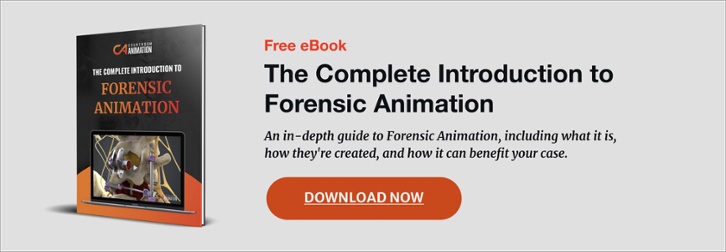
Topics: